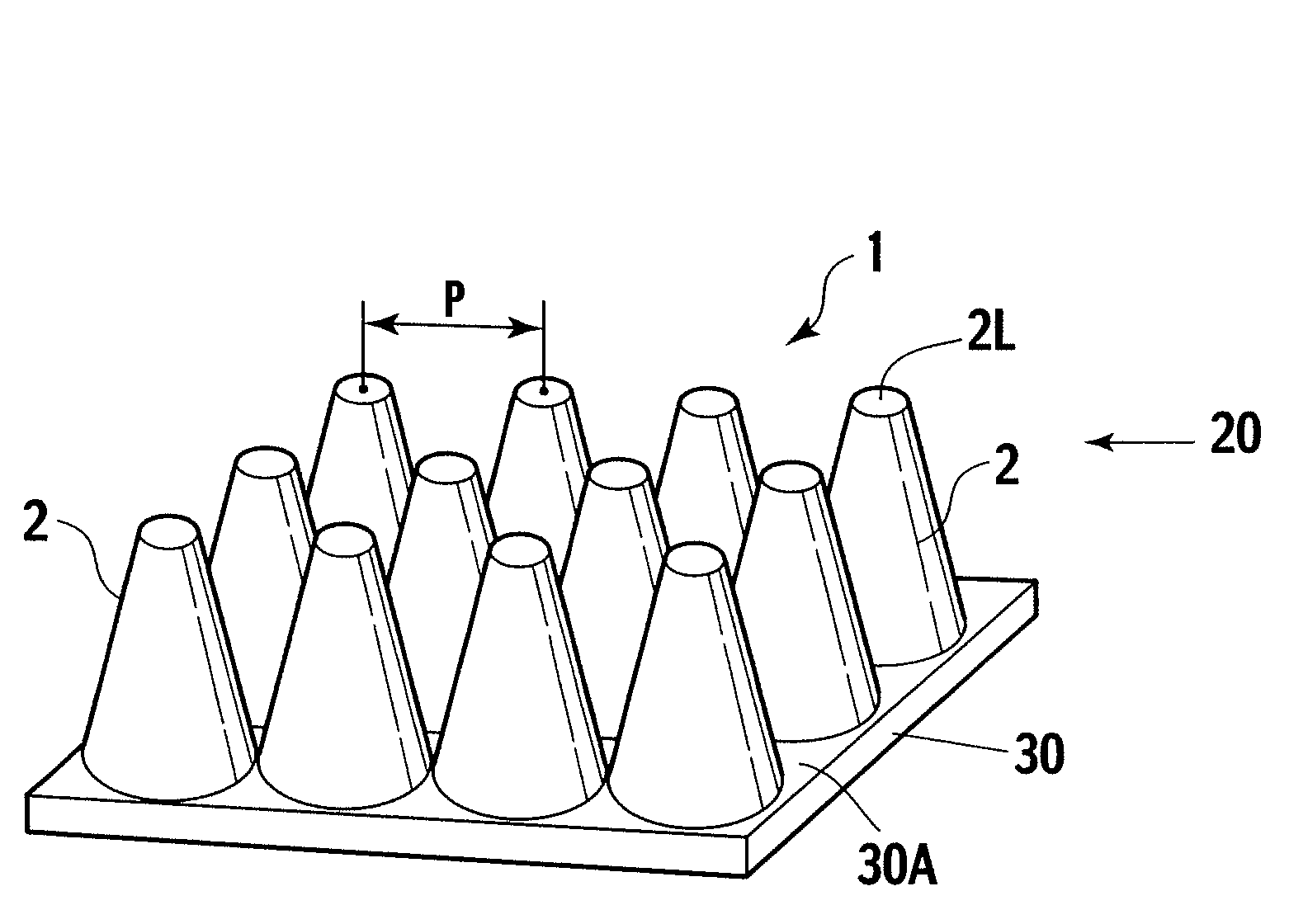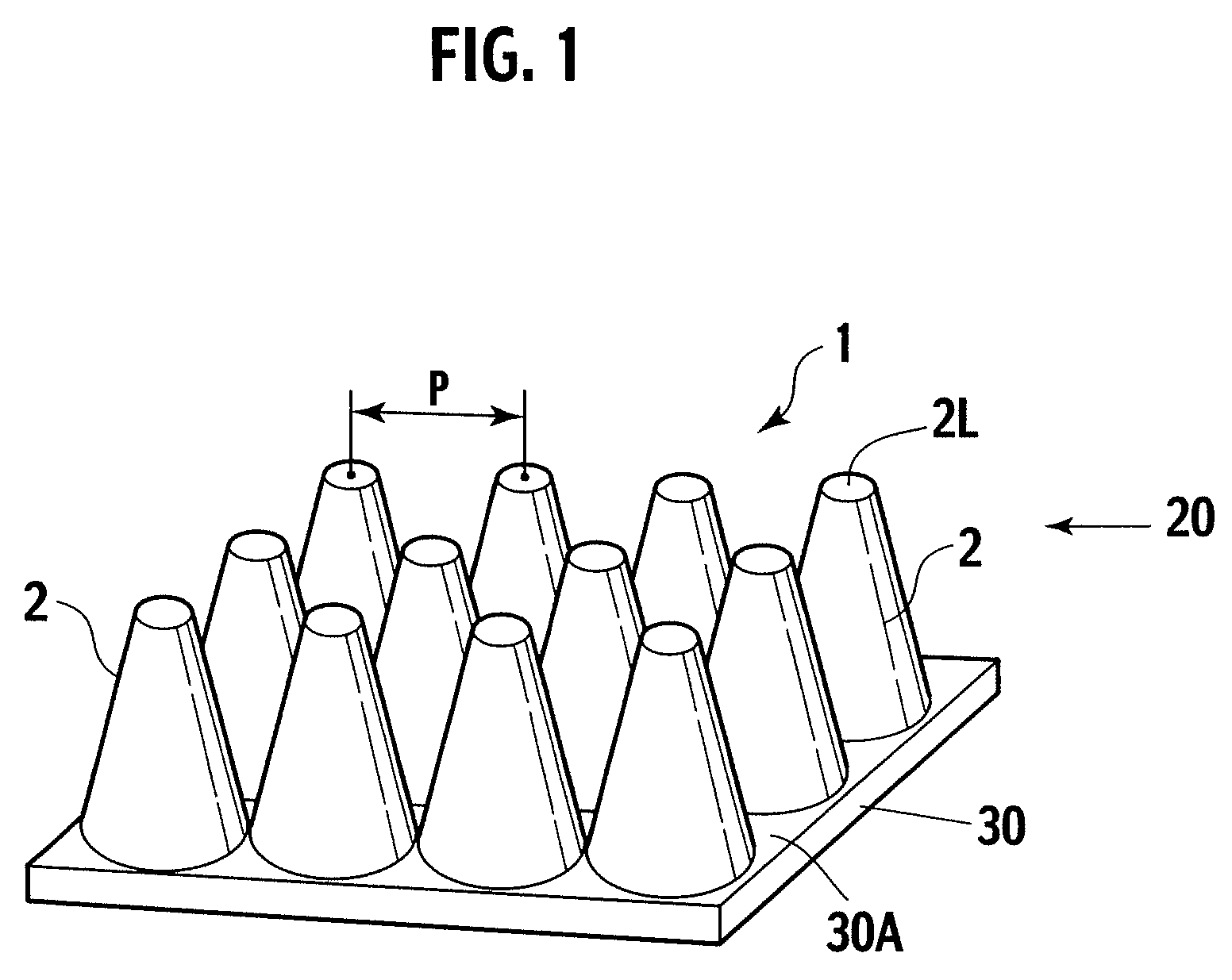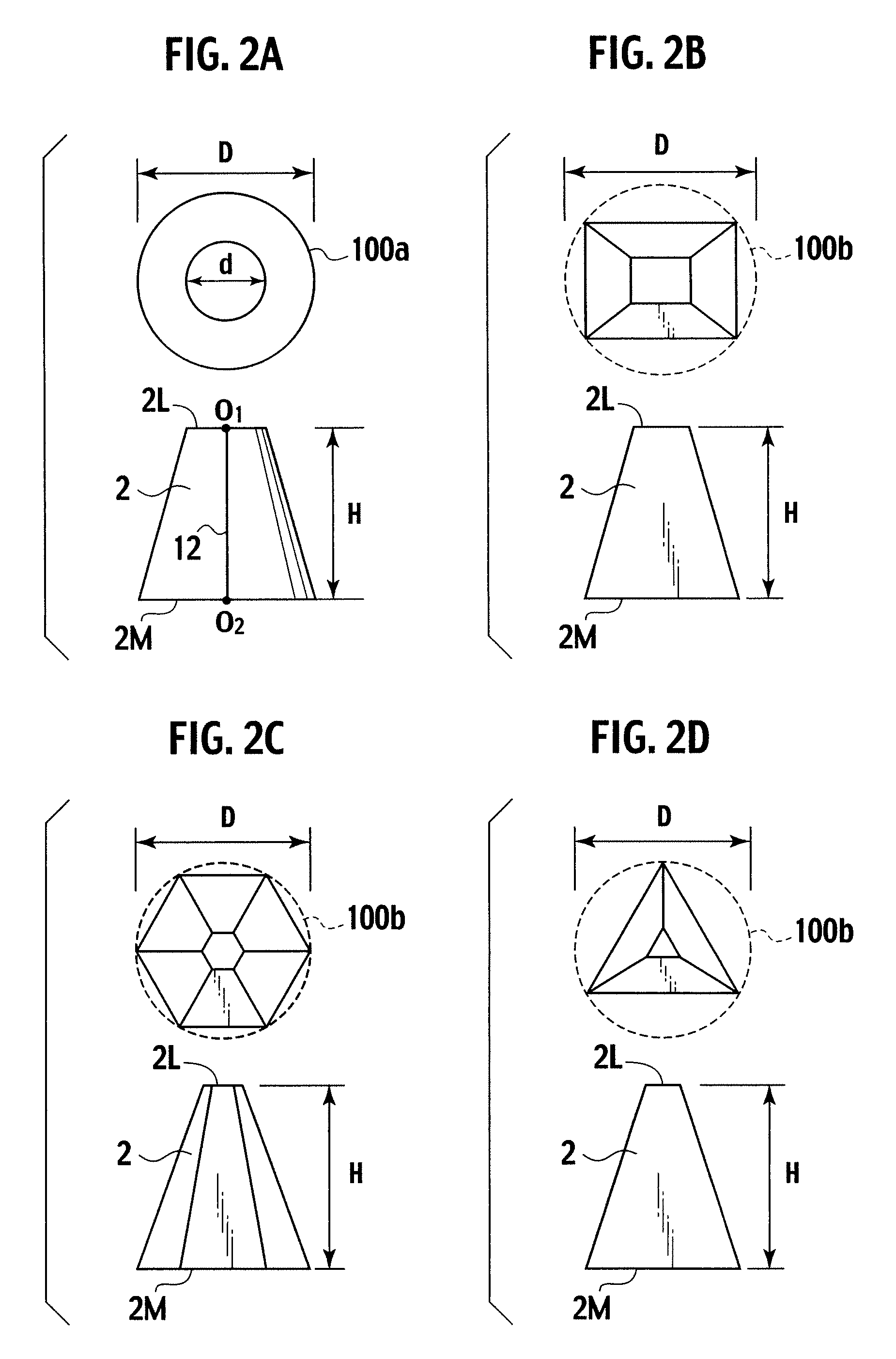Antireflective structure and antireflective molded body
a technology of anti-reflective structure and molded body, which is applied in the direction of optics, thin material handling, instruments, etc., can solve the problems of deteriorating anti-reflectivity, scratching the surface, and difficulty in viewing the various meters of the display, so as to improve the anti-reflectivity of electromagnetic waves and prevent damage to the head end parts
- Summary
- Abstract
- Description
- Claims
- Application Information
AI Technical Summary
Benefits of technology
Problems solved by technology
Method used
Image
Examples
first embodiment
[0036]FIG. 1 shows an antireflective structure 1, according to a first embodiment of the present invention. In the antireflective structure 1 of the present invention, a myriad of fine protrusions 2 each having a flat head end part 2L and shaped substantially into a truncated cone or a truncated pyramid (truncated cone in FIG. 1 according to the first embodiment) are arranged such that a pitch P of the fine protrusion 2 is smaller than a wavelength λ of an incident electromagnetic wave. The fine protrusions 20 form a fine structure layer 20. FIG. 1 also shows a flat layer 30 having a surface 30A on which the fine protrusions 2 are disposed. Hereinabove, a base face 2M of the fine protrusion 2 is smaller in size than the wavelength λ of the incident electromagnetic wave. More specifically, in the case of the truncated cone, a diameter D of a circle 100a of the base face 2M of the fine protrusion 2 is smaller than the wavelength λ of the incident electromagnetic wave (see FIG. 2A). Li...
example 1
[0120]A mold developed by a commercial electron beam drawing device was used. The mold was heated to 170° C. Then, 10 MPa of a pressure was applied to first and second faces 201A, 201B (both faces) of a polycarbonate (“PC” for short) substrate 201 for 1 hr, followed by cooling at less than or equal to 70° C., to thereby prepare an antireflective molded body 200 having both faces each formed with the antireflective structure 1 where the fine protrusions 2 are arranged in a hexagonal packed structure (pitch P: 1000 nm), as shown in Table 1. Each of the fine protrusions 2 has the following specifications:
[0121]
1) Overall configurationTruncated cone2) Diameter D of base face 2M:1000 nm 3) Diameter d of head end face 2L:250 nm4) Height H:750 nm
[0122]Then, the thus prepared antireflective molded body 200 was subjected to an irradiation of an infrared ray having a wavelength of 2000 nm, so as to measure reflectivity at an incident angle of 0 degree and a measurement angle of 0 degree, to t...
example 2
[0127]A mold developed by a like electron beam drawing device was used. Operations like those of the example 1 were repeated, to thereby prepare an antireflective molded body 200 including a polymethyl methacrylate (“PMMC” for short) substrate 201 having first and second faces 201A, 201B each formed with the antireflective structure 1 where the fine protrusions 2 are arranged in a hexagonal packed structure (pitch P: 300 nm), as shown in Table 1. Each of the fine protrusions 2 has the following specifications:
[0128]
1) Overall configurationTruncated cone2) Diameter D of base face 2M:300 nm3) Diameter d of head end face 2L: 45 nm4) Height H:220 nm
[0129]Then, the thus prepared antireflective molded body 200 was subjected to an irradiation of a visible light having a wavelength of 555 nm, so as to measure reflectivity at an incident angle of 0 degree and a measurement angle of 0 degree, to thereby evaluate antireflectivity.
[0130]Then, the scratchproof test was implemented on a surface o...
PUM
 Login to View More
Login to View More Abstract
Description
Claims
Application Information
 Login to View More
Login to View More - R&D
- Intellectual Property
- Life Sciences
- Materials
- Tech Scout
- Unparalleled Data Quality
- Higher Quality Content
- 60% Fewer Hallucinations
Browse by: Latest US Patents, China's latest patents, Technical Efficacy Thesaurus, Application Domain, Technology Topic, Popular Technical Reports.
© 2025 PatSnap. All rights reserved.Legal|Privacy policy|Modern Slavery Act Transparency Statement|Sitemap|About US| Contact US: help@patsnap.com



